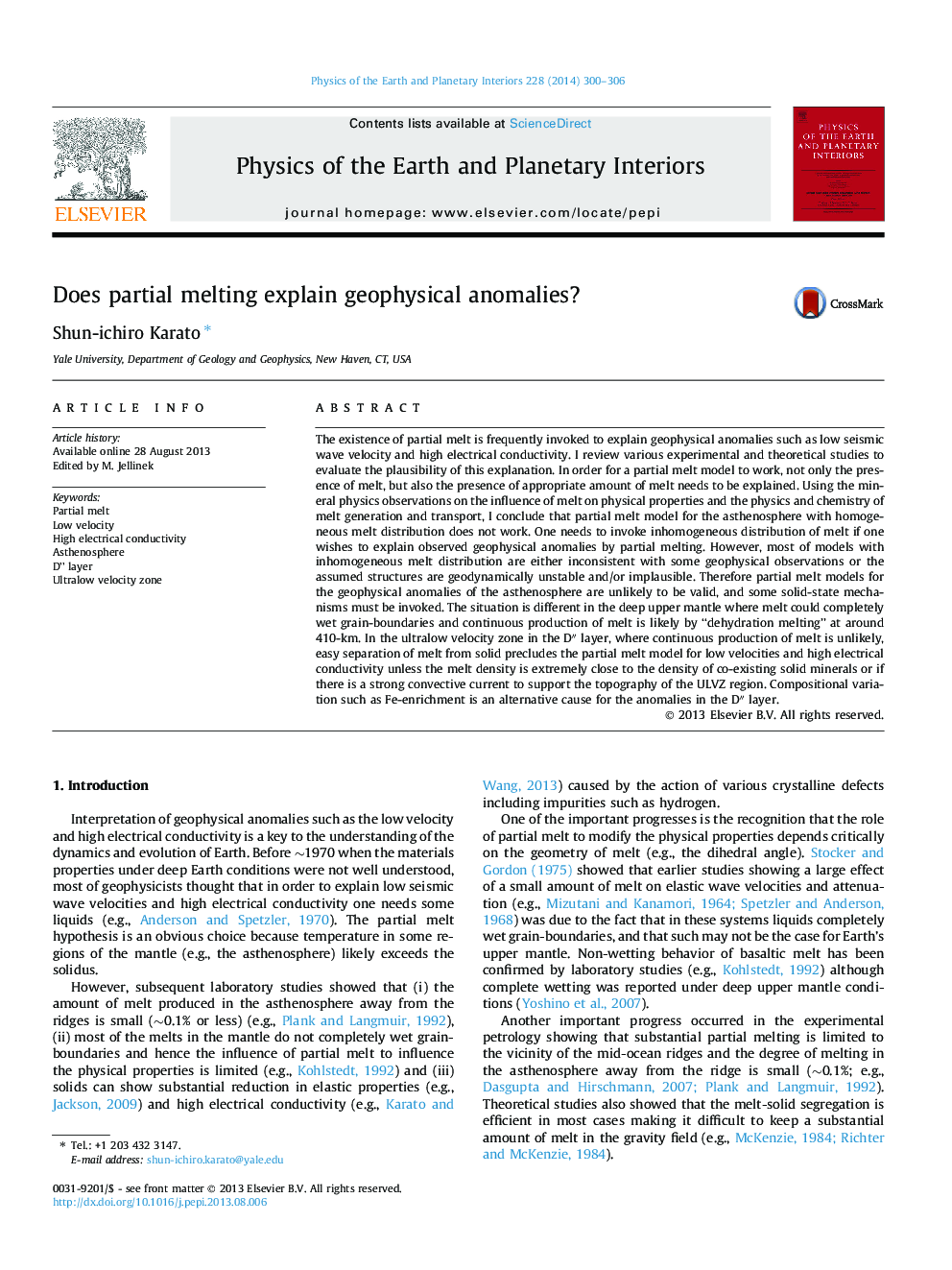| کد مقاله | کد نشریه | سال انتشار | مقاله انگلیسی | نسخه تمام متن |
|---|---|---|---|---|
| 4741604 | 1641513 | 2014 | 7 صفحه PDF | دانلود رایگان |
• Homogeneous partial melt cannot explain geophysical anomalies in the asthenosphere.
• Layered melt and melt accumulation model cannot reconcile with geophysical observations.
• Low velocity regions above the 410-km may be due to the presence of wetting melt.
The existence of partial melt is frequently invoked to explain geophysical anomalies such as low seismic wave velocity and high electrical conductivity. I review various experimental and theoretical studies to evaluate the plausibility of this explanation. In order for a partial melt model to work, not only the presence of melt, but also the presence of appropriate amount of melt needs to be explained. Using the mineral physics observations on the influence of melt on physical properties and the physics and chemistry of melt generation and transport, I conclude that partial melt model for the asthenosphere with homogeneous melt distribution does not work. One needs to invoke inhomogeneous distribution of melt if one wishes to explain observed geophysical anomalies by partial melting. However, most of models with inhomogeneous melt distribution are either inconsistent with some geophysical observations or the assumed structures are geodynamically unstable and/or implausible. Therefore partial melt models for the geophysical anomalies of the asthenosphere are unlikely to be valid, and some solid-state mechanisms must be invoked. The situation is different in the deep upper mantle where melt could completely wet grain-boundaries and continuous production of melt is likely by “dehydration melting” at around 410-km. In the ultralow velocity zone in the D″ layer, where continuous production of melt is unlikely, easy separation of melt from solid precludes the partial melt model for low velocities and high electrical conductivity unless the melt density is extremely close to the density of co-existing solid minerals or if there is a strong convective current to support the topography of the ULVZ region. Compositional variation such as Fe-enrichment is an alternative cause for the anomalies in the D″ layer.
Journal: Physics of the Earth and Planetary Interiors - Volume 228, March 2014, Pages 300–306
